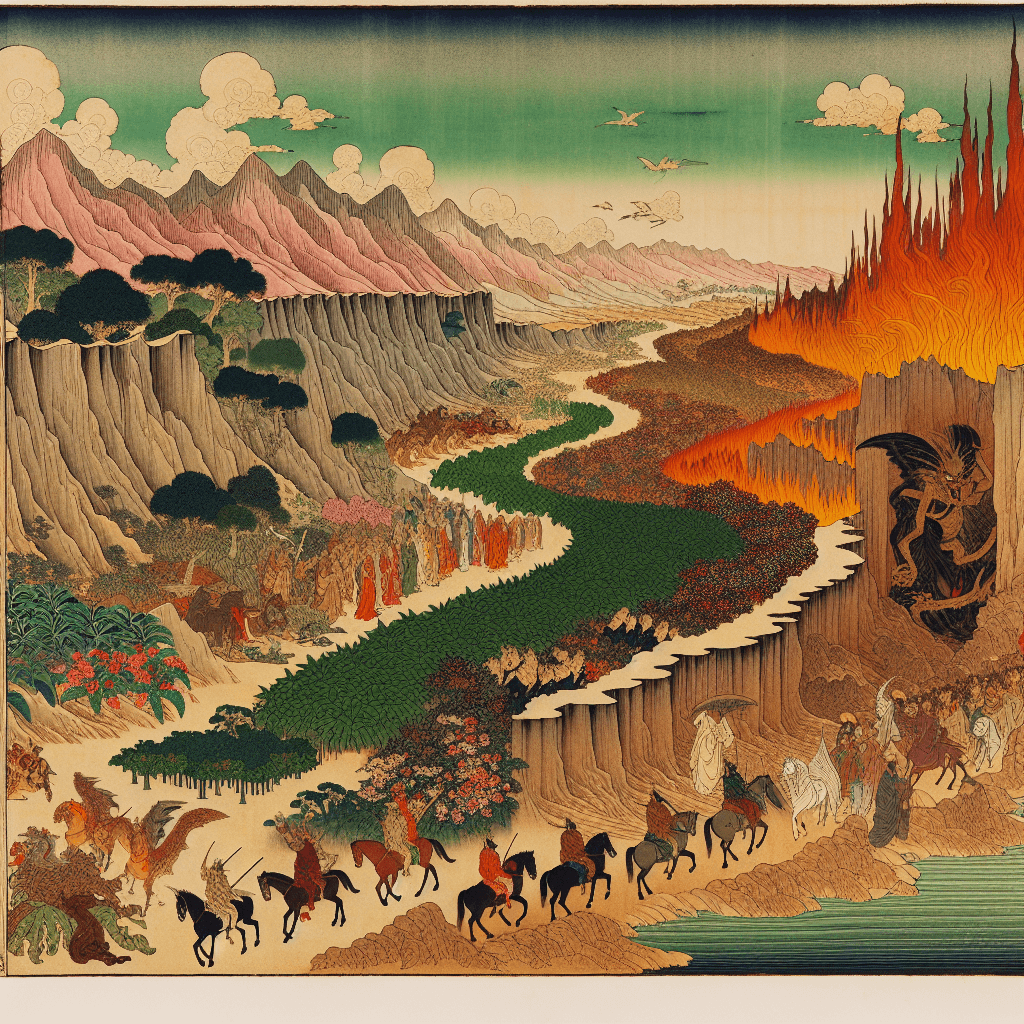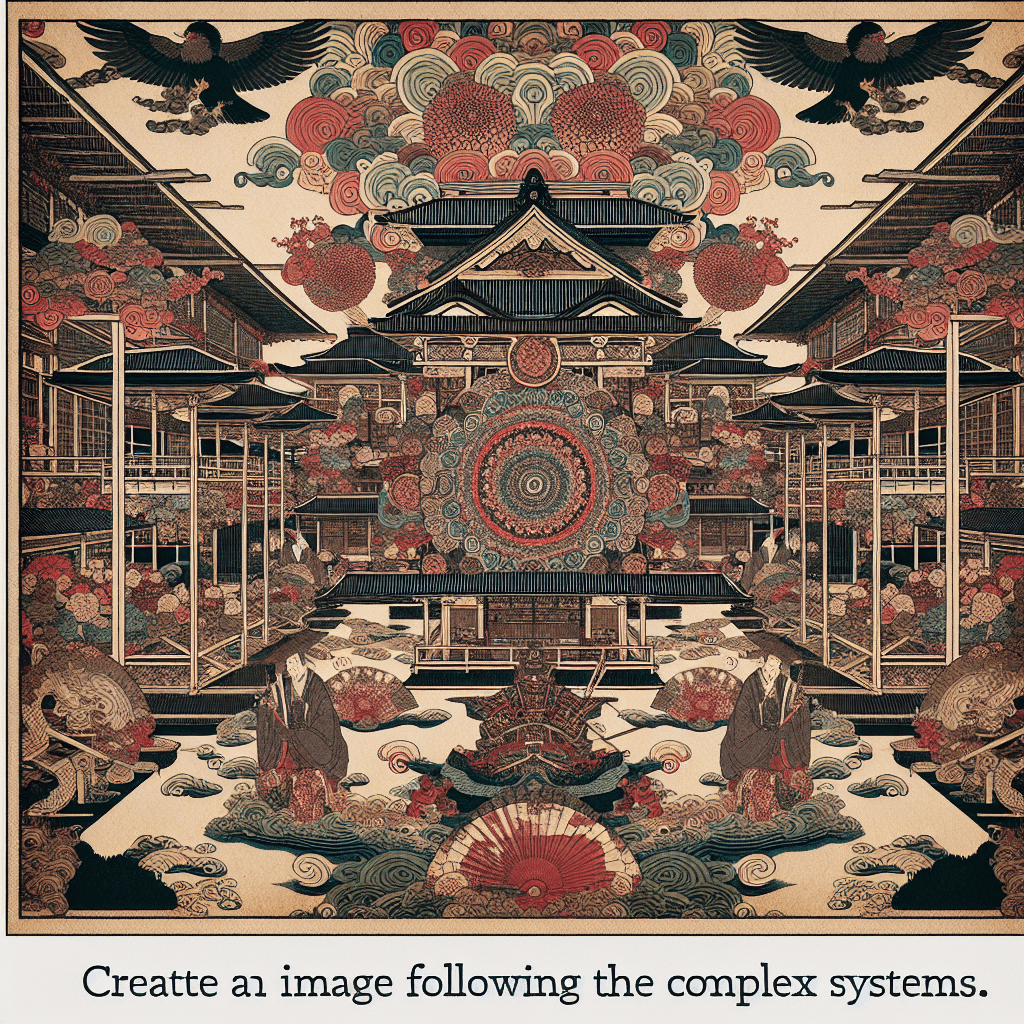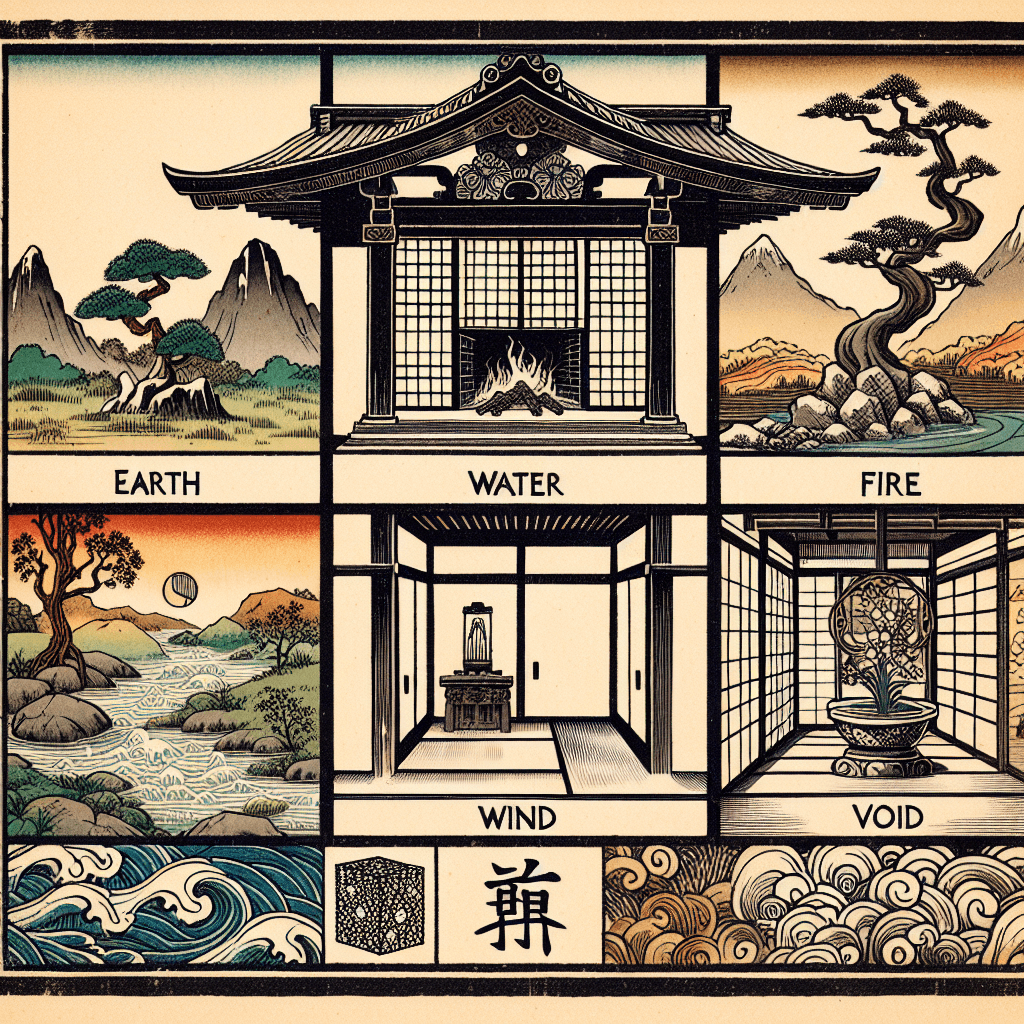Eternity Woven in Stone: A Reflective Journey through the Valley of Hinnom
syndu | Feb. 15, 2025, 5:57 a.m.

The Architecture of Hell in Mythology: Navigating Jewish Lore and Beyond
Hell—or its many equivalents across cultures—has fascinated humanity for millennia, giving rise to countless myths, rituals, and theological debates. In Jewish lore, we encounter stories of Ba’al once reigning but ultimately banished by King Solomon; in Kabbalah, Lilith is entwined with the Sitra Ahra yet curiously absent from key demonological texts like the *Lemegeton* (also known as the *Lesser Key of Solomon*). Lucifer’s arrival in Christian and later Western occult traditions only deepens the layers of complexity.
This content series aims to untangle these layers, revealing how differently "the Other Side" is constructed across sources. Below is an outline of the planned posts, each examining a facet of the "architecture" of Hell—its rulers, domains, powers, and precarious boundaries—with special emphasis on Jewish lore and its connections with other traditions.
Part 1: Ba’al, Solomon, and the Early Roots of Hellish Domains
- Pre-Biblical Ba’al: Once a widely worshiped Canaanite deity, Ba’al’s mythological trajectory in Jewish lore saw him transform into a powerful adversary to monotheism. This post explores Ba’al’s roles, and attributes, and stories depicting him as one of Hell's early rulers.
- Solomon’s Banishing Acts: Folktales describe Solomon's dominion over demons, an ability said to stem from his legendary Seal or Ring. Accounts include him commissioning demons to construct the First Temple or banishing them—shaping the architecture of Hell in Jewish folklore.
- Proto-Hell and Divine Punishment: Analyzing how early texts dealt with divine punishment for spiritual infractions—references to Tophet, Gehinnom, and conceptualizations of an underworld domain.
Part 2: Lucifer and the Christian Confluence
- The Luciferian Layer: While Lucifer's story took shape within Christian tradition, it intertwined with older Jewish narratives. We'll explore how his rebellious fall from heaven codified a Western notion of Hell as a rebellious kingdom, distinct from punishment-centric Hell in Jewish lore.
- Syncretism and Divergence: A discussion of how the Christian concept of Lucifer diverged and conflated with older figures like Ba’al or Beelzebub, resulting in evolving architectural blueprints of Hell—featuring cosmic battles and fallen angels.
Part 3: Kabbalah, Lilith, and the Sitra Ahra
- Understanding the Sitra Ahra: Within Kabbalistic teachings, reality is divided between spheres of holiness and the "Other Side," home to Qlippot (husks or shells) harboring malevolent forces. We unpack the cosmic structure and contrast it with the fiery Hell imagery typical in medieval Christianity.
- Lilith’s Place in Kabbalah: As Adam’s first wife or a night-spirit tied to demonic energies, Lilith roams at the threshold of the Other Side. We'll investigate her function within the demonic hierarchy, and why she's absent from mainstream Jewish demonology's “hellish kings.”
- Why the Lemegeton Omits Lilith: The Lemegeton, entrenched in Western occultism, draws on partially Christianized and Renaissance demonic catalogs. We unpack reasons why Lilith scarcely appears—possibly because of her differing Kabbalistic lineage.
Part 4: The Many Layers of the Underworld in Jewish Tradition
- Sheol, Gehinnom, and Beyond: Explore how these biblical and rabbinic terms depict nuanced understandings of the afterlife: Sheol as a shadowy abode, Gehinnom as a purgative realm, and the broader expansion upon subterranean realms.
- Angels, Demons, and Order: Highlight structured hierarchies found even within these “hellish” realms—discussions of figures like Asmodeus, the role of lesser demon realms, and their mysterious intersections with human lives.
Part 5: Comparative Demonology – Renaissance to Modern Times
- Christian Grimoire Tradition: Examine how texts like the Lemegeton or Pseudomonarchia Daemonum codified Hell’s hierarchy, naming kings, principalities, and lesser demons. Notable is the adoption of Jewish demon names, often adapted with new twists for Christian theology.
- Modern Esoteric Movements: From 19th-century occult revivals to contemporary magical practices, trace the evolution of Hell’s architecture, blending Hermetic Qabalah references with Christian lore.
Part 6: Synthesis—Reading the Other Side as Mythic Tapestry
- Weaving It All Together: Connect the banishment of Ba’al, Lucifer’s influence, the liminality of the Sitra Ahra, and Lilith’s separate genealogy. Discuss how such distinct strands can overlap based on tradition and textual history.
- Interpreting Contradictions: Consider how contradictory beliefs coexisting in a single culture’s evolving demonology invite a reading not as definitive blueprints, but as expressions of theological and imaginative evolution.
- The Ongoing Conversation: Conclude by engaging how new artistic expressions, pop culture, and theological scholarship keep Hell dynamic—being continuously reinterpreted in line with modern values, fears, and fascinations.
Final Thoughts on the Series
This series highlights how Hell can mean many things—a moral allegory, a cosmic domain of punishment, or a labyrinthine realm of spiritual energies (as seen in Kabbalah). Ba’al’s banishment, Lucifer’s impact, and Lilith’s role in the Sitra Ahra demonstrate the intricate complexity of Hell, as described in Jewish mythos. Upon entering through the lens of different traditions, readers will see Hell as not a single, neatly schematized domain but rather as a thick, dense tapestry weaving together centuries of theological and cultural exchange.
Stay tuned for each installment, where we’ll delve more deeply into these enthralling, sometimes competing, and sometimes complementary visions of what might await beyond the veil.



